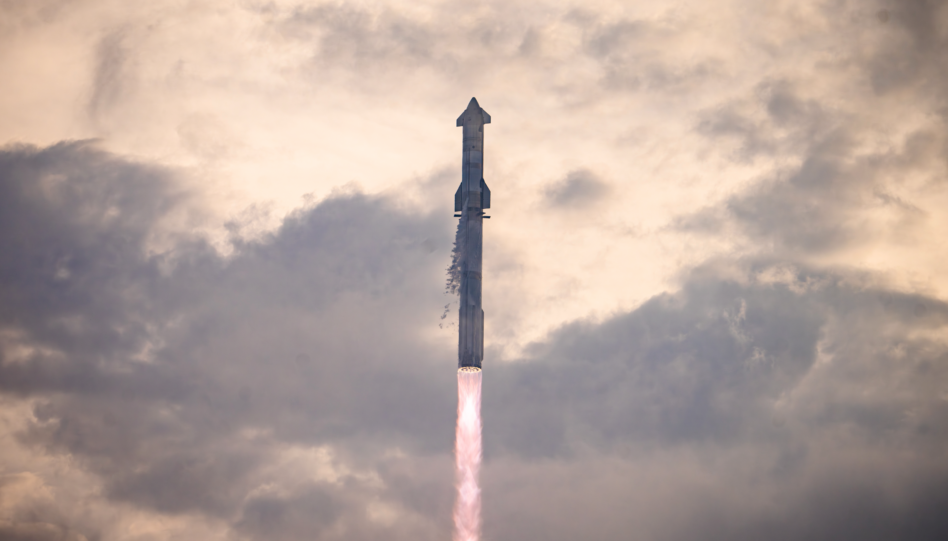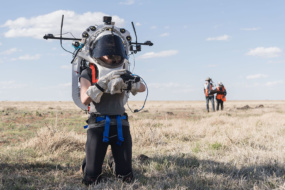Ed. note: This is a Payload Research analysis piece, authored by Jack Kuhr, Payload’s Research Director, and Mo Islam, Payload’s cofounder. Proprietary research, analysis, and estimates are labeled. You can sign up for Payload Research here.
We have entered the Starship era.
Starship reached orbital velocity during IFT-3 last week, largely validating its capability as an expendable rocket while SpaceX continues to try to nail down vehicle recovery.
With a less cumbersome regulatory and hardware update preriod ahead, the company expects an expedited turnaround time and is targeting IFT-4 in six weeks, according to SpaceX COO Gwynne Shotwell.
Tracking progress: Each Starship integrated flight test has improved significantly from the last. The fail-fast iterative design process has allowed SpaceX to identify and address issues swiftly, prompting thousands of upgrades for each new test flight.
IFT-1 lasted four minutes before ending in fireball.
Primary IFT-1 to IFT-2 improvements:
- Installed a water deluge system to protect the launch pad
- Throttled up Starship’s engines faster during lift-off to avoid pad damage
- Replaced the hydraulic system with electric thrust vector controls to isolate engines and prevent cascading Raptor failures
- Adjusted flight software to incorporate data from IFT-1
IFT-2 lasted eight minutes, completed stage separation, and reached space.
Primary IFT-2 to IFT-3 improvements:
- Reduced slosh and filter blockage on fuel lines
- Improved hardware to prevent leaks and fires
- Adjusted flight software to incorporate data from IFT-2
IFT-3 lasted 49 minutes, achieving its planned suborbital trajectory before kicking the bucket on re-entry when plasma engulfed the vehicle.
No vehicle left behind: With Starship reaching orbital velocity and coasting in space, the mega-rocket largely demonstrated the rocket’s capability in an expendable configuration. However, SpaceX still has significant work ahead to achieve full reusability.
After hot staging, the booster completed its boost-back maneuver and successfully relit several engines for the landing burn. The booster descended to 462 m above sea level before succumbing to a bad case of the wobbles and near-supersonic speeds of 1,111 km/h, according to broadcasted telemetry data.
Starship’s second stage also ran into trouble during its return flight. SpaceX struggled to control Starship’s roll during re-entry, exposing the spacecraft’s unprotected stainless steel side to plasma temperatures.
For IFT-4: SpaceX will primarily look to improve vehicle landing:
- Controlling engine burn and booster landing
- Securing heat shield tiles
- Eliminating roll issues on Starship reentry
Considering that nearly every other rocket is entirely expendable, attempting reuse is a bonus and regulators don’t see a failure to recover the vehicles as a significant anomaly.
What say you, FAA: “We didn’t see anything major. We don’t think there’s any critical systems for safety that were implicated,” the FAA’s Kelvin Coleman said at Payload’s Space Capitol event on Monday. “Usually if there’s not any critical systems for safety implicated, the mishap investigation can be pretty clean and it can move pretty quickly.”
Shotwell said on Tuesday at Satellite 2024 that Starship could fly again in about six weeks. She also reiterated the goal for Starship to recover both stages this year.
Clearing the path: Going forward, the FAA will look to ease Starship’s launch approval process.
“We’re trying to work with them to get them on a different program, if you will, in terms of how we approve their launches going forward,” Coleman said. “We want to get away from the launch-by-launch approvals and get more into what Part 450 was really designed for, which is an approval of a portfolio of launches.”
Exploring Expendable Starship
IFT-3 largely demonstrated Starship’s capability as an expendable vehicle. According to SpaceX, Starship is currently capable of hauling ~200 tons to LEO in an expendable configuration, making it the most capable rocket ever developed.
It would take nine Falcon 9 expendable flights to deliver the same payload volume as one expendable Starship flight.
In addition to thrust capability, SpaceX is building Starship at an ultra-low cost. SpaceX constructs Starship by stacking inexpensive stainless steel rolls on top of each other instead of using conventional carbon/aluminum, significantly reducing material costs. The launch giant is pumping out Raptor engines at a pace of one a day, helping the company bring the cost per engine down to ~$1M (per Payload analysis). And by building Starship and Super Heavy boosters at a blistering pace, the company can spread fixed costs and add operational efficiency.
SpaceX has said it could spend up to $10B on Starship R&D. In the next couple of years, Post-R&D, Payload estimates SpaceX will be able to build each full-stack Starship for below $100M.
Starship V.1: Starship V.1, which was launched on IFT-3, can transport a staggering 200,000 kg in an expendable configuration, according to SpaceX. At that performance level, Payload estimates Starship’s internal cost to send a kg of payload to orbit in an expendable configuration would come in at around $500. Considering SpaceX’s internal cost to launch Falcon 9 on an expendable basis is likely above $2,000 per kg (per Payload analysis), SpaceX’s reduction in cost to orbit is already significantly improved.
Starship V.2: SpaceX plans to launch three or four more Starship V.1 prototypes before transitioning to a new Starship V.2 as soon as this year. V.2 will increase propellant capacity, reduce dry mass, and improve overall reliability.
Starship V.3: SpaceX is already scoping out a Starship V.3, which Elon Musk said will be 20 to 30 m taller and capable of 10,000 tons of thrust. To achieve that level of performance, SpaceX plans to employ its Raptor 3 engines, which are capable of 350 bar chamber pressure, enabling 20% more thrust than the Raptor 2 engines that are currently in use.
- 400 tons expendable: SpaceX anticipates that Starship V.3 will be able to carry a mind-boggling ~200 tons fully reusable and ~400 tons expendable.
- The video game-type numbers would cut the internal expendable cost to launch a kg to orbit in half again.
Utilized as an expendable vehicle, Starship is the most capable rocket ever created, and stopping development there could spare SpaceX billions of dollars in R&D costs. However, full reusability is the launch giant’s ultimate goal as it would bring the cost to orbit down even further. SpaceX is determined to fly and blow up as many Starships as necessary to achieve the goal.




